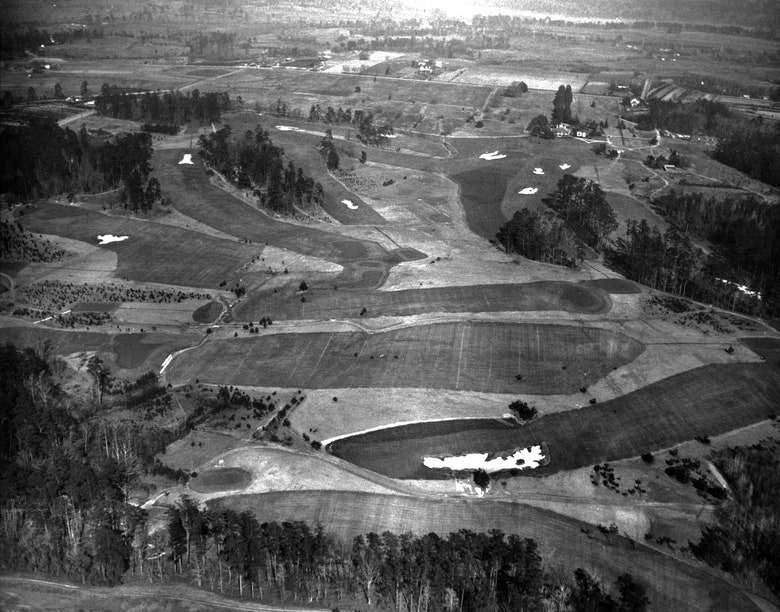Photo by PhotoQuest/Getty Images
The Course at Augusta
The Coronavirus pandemic has hit a giant pause button on fans being able to watch golf on TV, and in some cases, even kept people off courses. But while we hunker down and hope for a speedy return to normalcy, we can also use this time as an opportunity to learn more about the game we love. Here’s our latest installment of “Did you know?”
By Joel Beall
Forget the “the shot heard ’round the world,” the Golden Bear coming out of hibernation or the chip that didn’t go in until it did. The biggest thing that’s happened to Augusta National’s second nine is switching it from the first.
That’s right, golf’s most famous back was once a front.
Although architect Alister Mackenzie mapped out the course as its currently presented, for reasons that remain unknown he decided to flip the nines during construction. Mackenzie’s switch served as the layout when the club opened, and was the routing for the first Masters Tournament in 1934.
However, co-founders Bobby Jones and Cliff Roberts decided to return to the original conception. The changed was noted by the Augusta Chronicle in November 1934:
“It was also announced that the order of play over the course will be changed this year, with the back nine holes and the front nine reversed. Under the new plans, No. 10 hole will become No. 1 and the old No. 1 will be No. 10. The change was decided, officials said, because the first nine holes are more difficult to play than the last nine, and playing the easier holes first will give players an opportunity to warm up before reaching the intricate problems of the difficult holes.
“It was stated that decision to reverse the order of play on the course was reached at a conference in New York by Clifford Roberts, executive secretary of the club, Grantland Rice and other officials.”
What facilitated the move? Roberts wrote in “The Story of the Augusta National Golf Club” that weather—specifically, frost—was the catalyst.
“The change was made because we learned through experience that play could begin earlier after a frost on what is now the first nine, due to its being on higher ground,” Roberts noted. “The switch was made in time for the fall season club opening (in 1934).”
The move paid immediate dividends: Gene Sarazen’s double eagle, arguably the most famous shot in the sport’s history, happened at the 1935 Masters. And, at the risk of embellishment, the past 85 years have been kind on the decision as well.









